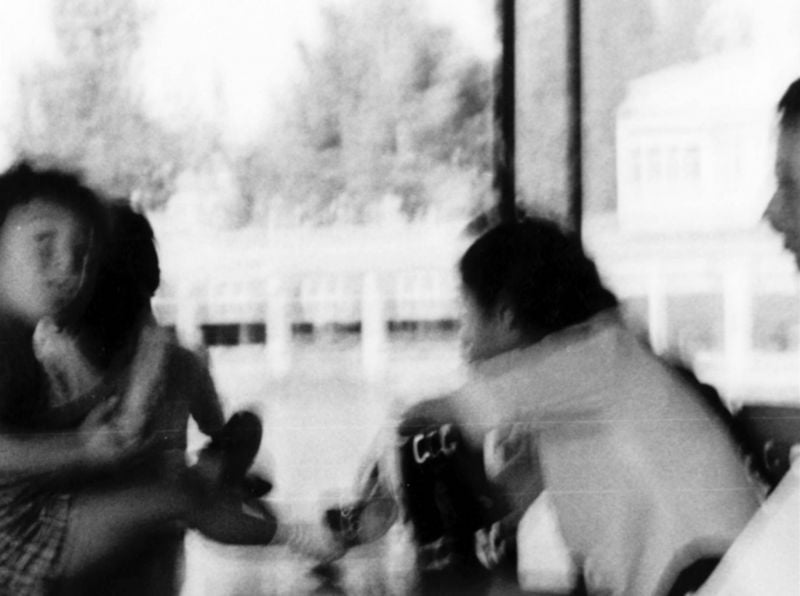
The blurry still that serves as the linchpin of Mansour’s 2018 feature ‘Ainata.’ (Credit: Courtesy of the artist)
BEIRUT — On the other side of an open window it’s a quiet Easter Monday evening. Within, a blizzard of ideas, authors and book titles swirl about independent filmmaker Alaa Mansour — Gore Capitalism, liquid surveillance, The Universal Enemy among them. Buffeting Mansour’s personal details — a family history in the southern village of Ainata, Israel’s 2006 war in Lebanon, 16 years in France — the storm outlines an artistic practice.
“I’m a film-video image-maker and researcher-archivist. I have a bit of a problem with the ‘artist’ title,” Mansour says. “I like making things. I’m also in charge of the visual research with Bidayat magazine. Unfortunately, the magazine had to suspend publication this year because of a lack of funding. I’m involved in other publications too.”
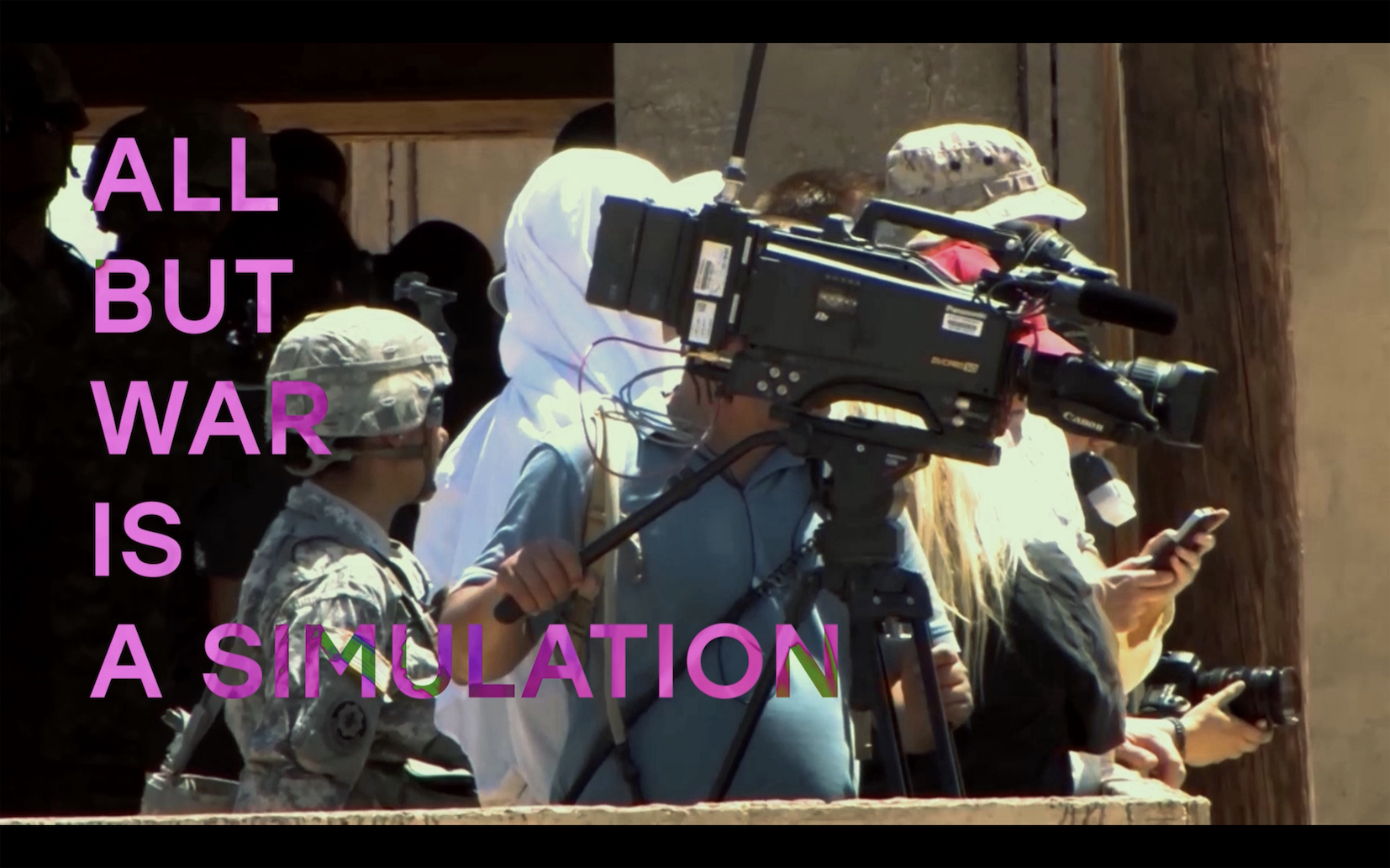 A still from ‘Badlands — The second time as a farce,’ video, 2023, on view during Mansour’s show ‘Game of Life,’ at Takeover gallery. (Credit: Courtesy of the artist)
A still from ‘Badlands — The second time as a farce,’ video, 2023, on view during Mansour’s show ‘Game of Life,’ at Takeover gallery. (Credit: Courtesy of the artist)
The Kinshasa-born Mansour has completed two long-form films — the independently produced “Ainata,” 2018, and “The Mad Man’s Laughter,” 2021, a commission from Ashkal Alwan and Austrian Art Foundation TBA 21, in which her interest in archiving is paired with Artificial Intelligence.
Some of the work to emerge from Mansour’s practice is being exhibited in her show “Game of Life,” which runs April 19-May 6 at Takeover Beirut.
“It’s not an exhibition,” she clarifies. “It’s work in progress. It’s related to my ongoing research, specifically a new film project I’m developing. Its subtitle could be ‘The museification of war.’”
After a day preparing to install the Takeover show, Mansour sat with L’Orient Today to discuss the concerns and ideas behind her work, a conversation accentuated by the play of a pair of mismatched cats, and the insistent bing of mobile phone notifications.
‘Game of Life’
Mansour’s show comprises a series of her print images and videos. Because the creative process is entangled in machine learning and video game technology — an esoteric subject for some — the conversation occasionally veers near the obscure.
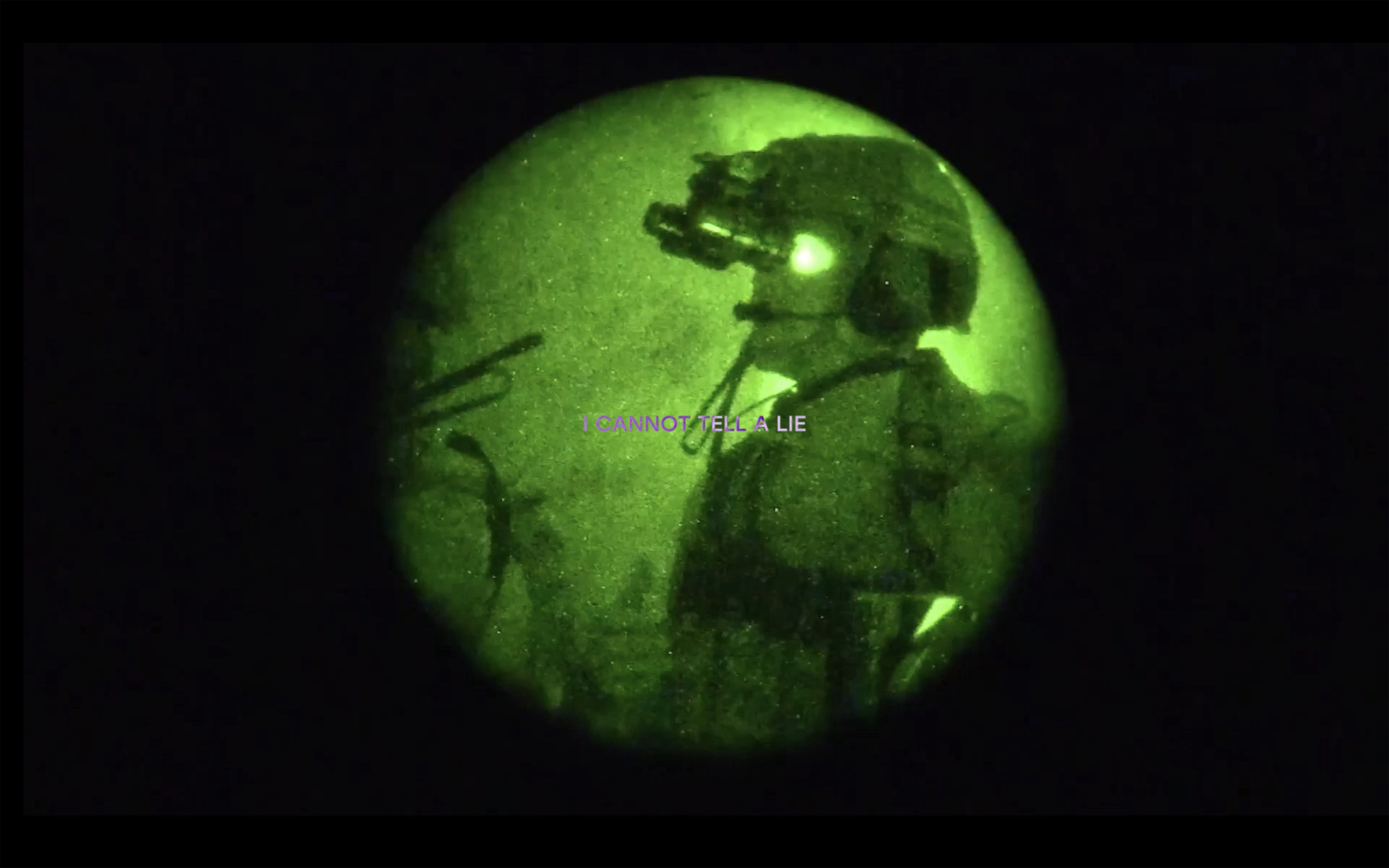 A still from ‘Badlands — The second time as a farce,’ video, 2023, on view during Mansour’s show ‘Game of Life,’ at Takeover gallery. (Credit: Courtesy of the artist)
A still from ‘Badlands — The second time as a farce,’ video, 2023, on view during Mansour’s show ‘Game of Life,’ at Takeover gallery. (Credit: Courtesy of the artist)
“An [AI] machine is a very binary setup,” she begins. “It goes from one data set to the other to understand that you want this and not that. It’s a process of negation.
“When you train a model with pre-existing software, you have to depend on other data sets. So when you develop your own model — your own GAN [generative adversarial network] — from scratch, you can rely on just your own data set. This is my aim, but I’m not at that level yet.”
“Game of Life” will include images from Mansour’s AI-generated series “Military Eden.”
“I’m interested in political myth and the sublimation and aesthetics of war and war as praxis ... I collect a lot of military imagery, but also very cringy American material, like arms fairs with really hot babes firing weapons, because I’m also fascinated by the relationship between pornography and war. [French sociologist Jean] Baudrillard speaks about death as the last pornography of humanity.”
Among the moving images on show is a new 12-minute video titled “Badlands — the second time as farce.”
“‘Badlands’ is about the simulated realm, a speculation on and about the future of war,” she says. “I will also be sharing archival elements — a mixture of archival data and fictive, generated archives.”
During its three weeks, “Game of Life” will be a mutable thing.
“It’s an evolving show,” Mansour says. “I will be inviting fellow makers to share this space with me, to contribute works. I think I will transform the space, removing, adding, replacing material.”
Mansour is a strong advocate for the sort of critically engaged artistic practice that Ashkal Alwan has cultivated since it was founded, and she places her own work on a similar vector.
“Because we live in this region (constantly under violence, wars, occupation), we should be looking into these histories of violence from our own perspective, in our own language. We should question this Arab identity, this Arab image that we’ve adopted. We have become our own fetish.”
A ping of agreement rings from a mobile phone plugged in nearby.
“We have come to believe what the West has built from images and text,” she explains. “We have adopted it as our own identity. We need more cultural production in the region. We have to step outside history, outside the event.
“We are the permanent event. We are the TV. We are the headline. But we are never outside the event, to look at it from a distance.”
About Ainata
Mansour’s practice resonates from her personal history.
“My father is a Marxist,” she states, “so I’ve been raised with these big ideas, like Liberation. Related to this is the question of identity — who are you as a human being, your positioning in this world — and how politics isn’t an abstract thing, but actual labor in our everyday lives.”
She takes a drag of a cigarette.
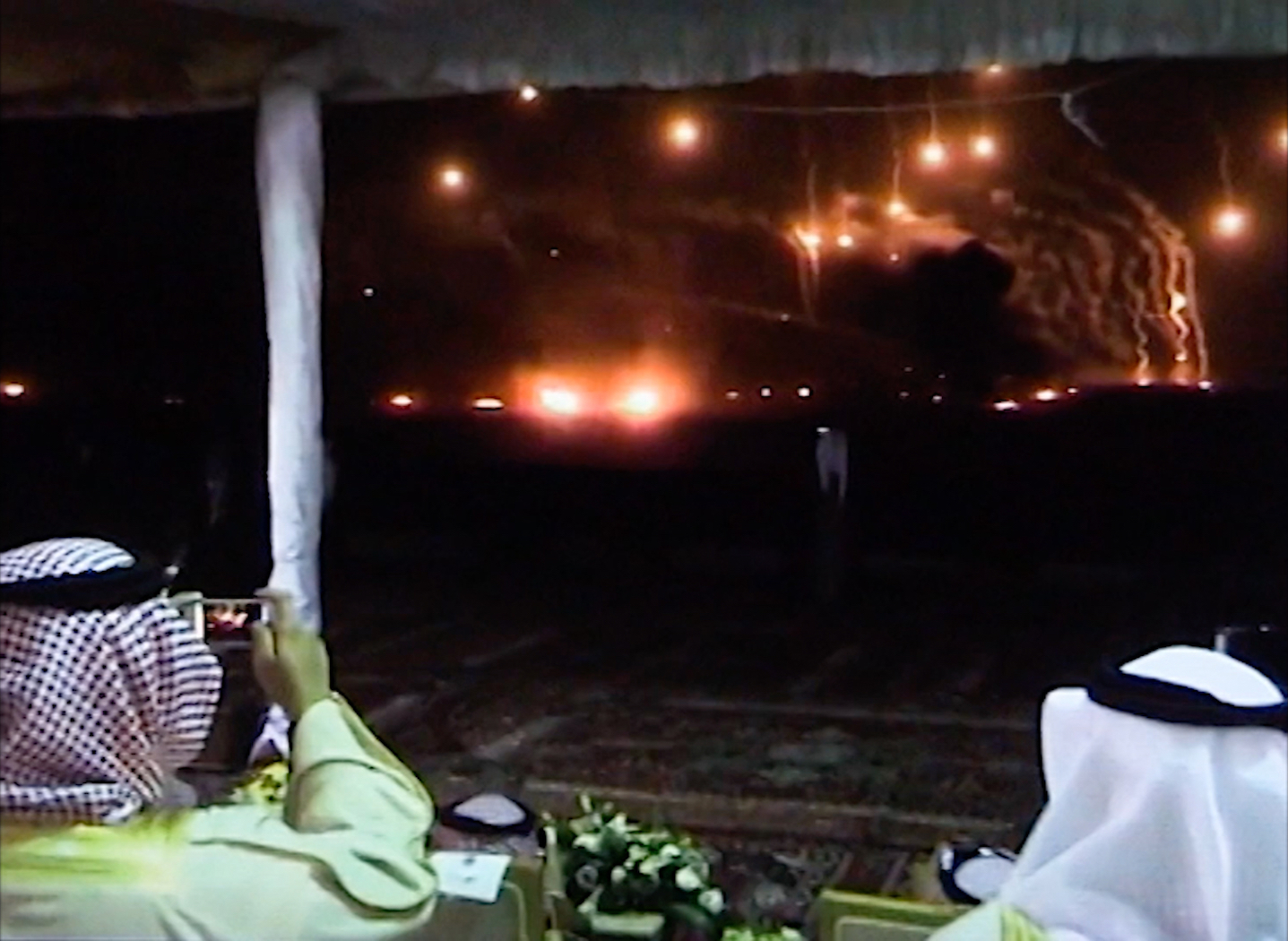 A still from Mansour’s film ‘The Mad Man’s Laughter,’ 2021, which explores the military-entertainment complex. (Credit: Courtesy of the artist)
A still from Mansour’s film ‘The Mad Man’s Laughter,’ 2021, which explores the military-entertainment complex. (Credit: Courtesy of the artist)
“Recently I came to realize I’m obsessed with the archive because of an image I saw. I was in Dahyeh during the 2006 war, but we managed to escape with my mother. She returned to the Congo. I went back to France.
“I was following the news on Al Jazeera live with my sisters as we witnessed the destruction of our apartment,” she chuckles. “I like to talk about the materiality of violence. This is when I actually could perceive that [materiality], framed by the media. It’s a very intimate event in my life.”
She says making her first film, “Ainata,” was seminal to her practice.
“It materializes my feverish relationship to archives,” she smiles, “and also my obsession with the image.
“Ainata is where my parents were born. Eighty percent of the village was destroyed during the 2006 Israeli war. The desire to make a film grew within me from 2006 until 2011-2012, when I shot it, and 2018, when I finished the editing. The film actually transformed into an archive in itself. I shot people who died, who were absent when the film was completed.
“I think ‘Ainata’ was my first attempt to step outside this big history, the big narrative — whether it’s the romantic communist vision of the resistance or the actual fascistic, militarized vision today, personified by Hezbollah. I tried to tackle this transition, from these big dreams of resistance and liberating Palestine to what came out of it.
“I tried to address this through the voice of my father. He’s not present in the film but he does some of the voiceover narration.”
Mansour says the film is interested in how resistance has changed over the years.
“[Philosopher Gilles Deleuze and psychoanalyst and political activist Félix Guattari], say ‘We lack resistance to the present.’ I feel we have forgot. It’s just an identity now, more than struggle and cause. I tried to address this issue. Liberating territory is not enough. You must actually liberate human beings from their social conditions, from poverty.”
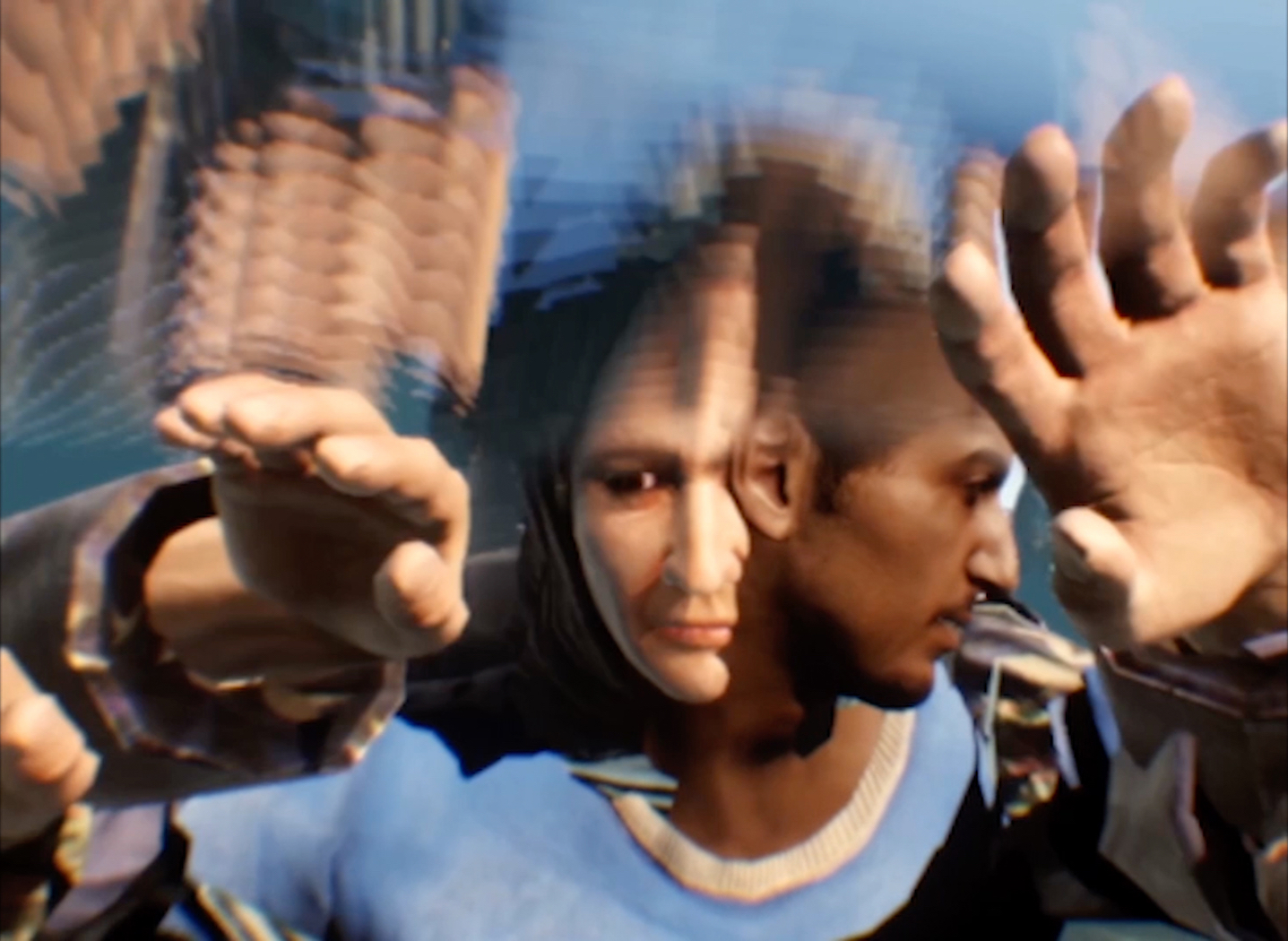 A still from Mansour’s film ‘The Mad Man’s Laughter,’ 2021. (Credit: Courtesy of the artist)
A still from Mansour’s film ‘The Mad Man’s Laughter,’ 2021. (Credit: Courtesy of the artist)
‘The Mad Man’s Laughter’
Mansour’s second film was conceived during COVID lockdown when Ashkal Alwan programmed “Ainata” for Aashra, its online streaming service. The validation of Christine Tohme’s organization was a big deal.
She moved to Marseille just as French Muslims had to deal with the police blowback after secondary school teacher Samuel Paty was murdered and decapitated. She was also encountering “Gore Capitalism,” Sayak Valencia’s study that builds Mexican narco-trafficking into the current global political-economic system.
“I became interested in terrorism as a neoliberal industry, with its own media apparatus and regime of images,” she recalls, “and in correlating that with what capitalism is actually producing — from imaginaries to subjectivities — and how it’s actually depicting the other, the enemy.”
Ashkal Alwan offered Mansour her first-ever commission, in collaboration with the Austrian art foundation TBA 21. While her journey through “Ainata” commenced in 2006 and came into fruition 2011-2018, she now had a more-restricted creative window.
“I had carte blanche but I had six months to complete it,” she says. “Edwin Nasr, the curator who followed up on the project, introduced me to Darryl Li’s book ‘The Universal Enemy.’”
Li’s study resonated with Mansour’s experience as an Arab in France.
“I was questioning this fetish, this constructed image of the other,” she says. “I knew that I wanted to work on that. I didn’t know how.”
Ultimately Mansour collaborated with English 3D artist and computer scientist George Simms to train an AI model how to generate a face. She collected more than 4000 images from various search engines — including Google and the Russian-language Yandex as well as the Daesh archive — to create what the industry calls interpolation videos, which make digitized faces morph into one another.
“There’s a short sequence in the film where we see realistic faces,” she says, “but I was more interested in the non-face, in the abstraction, the reification of the enemy.
“I was very influenced by Zygmunt Bauman, who wrote about liquid surveillance, about how we live in a state of liquid violence: Violence is no longer only a tangible thing. It can be invisible, slow, latent.”
Mansour recalls using Machinima — purportedly “the most notorious purveyor and cultivator of fandom and gamer culture” — to mine America’s Army (a hugely successful shooter-perspective combat video game developed by the US Department of Defense) to create the fictive characters in “The Mad Man’s Laughter.”
“American artists used Machinima as a counter-propaganda [platform],” she says, “criticizing how video games were used to purvey fake terrorism narratives. They were criticizing the war in Iraq and Afghanistan and how the DoD was using video games to recruit future soldiers. I’m not saying that terrorism doesn’t exist, just that it isn’t separate from a global system that feeds it.”
The two cats are competing for a stray beer cap, Almaza, batting it across the tiles like a hockey puck.
“I managed to download the mode of the game that’s set in Fallujah and downloaded characters. It was pretty horrible, the semantics you have to use — like ‘Arab women with veil’ — for specific characters. It’s strange to see the words used to define you from a Western point of view.”
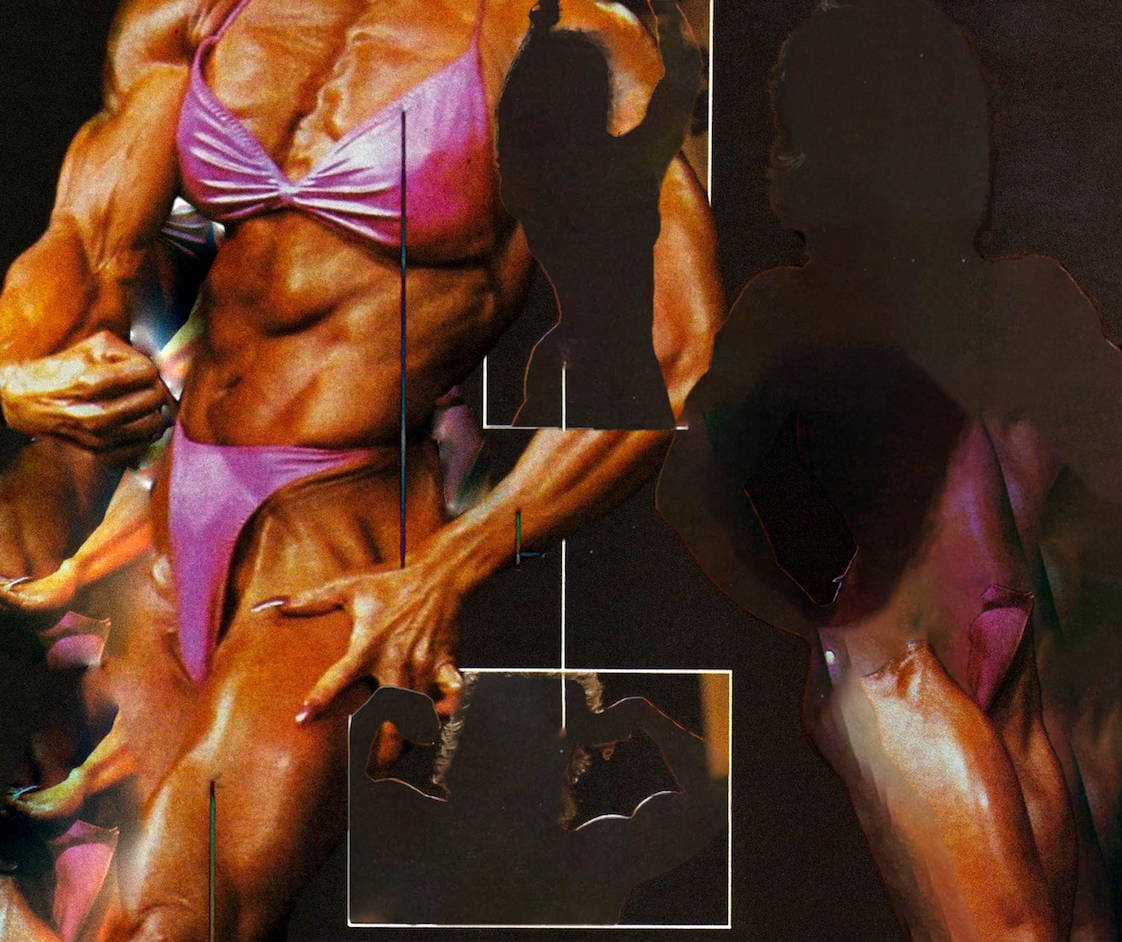 From the visual series ‘Tragedy is an unfinished comedy,’ 2021, on view during Mansour’s show ‘Game of Life,’ at Takeover gallery. (Credit: Courtesy of the artist)
From the visual series ‘Tragedy is an unfinished comedy,’ 2021, on view during Mansour’s show ‘Game of Life,’ at Takeover gallery. (Credit: Courtesy of the artist)
Return to Ainata
Since 2020, Mansour has been working on a new book project based on her ‘Ainata’ film. Over the next 18 months she’ll develop it as a bilingual (Arabic and English) work with French photographer Camille Carbonaro, who runs the independent publishing house Macaronibook in Brussels.
“Camille invited me to extend the work,” she recalls. “It’s not a book about the film. It’s an actual book with elements of the film. Many years have passed since I made ‘Ainata,’ and I would like to explore the materiality of the image within a book. I will also explore the book as an object, a medium, working with paper itself and the many different processes for transforming an image — reframing, reshooting, etc.”
There will no precise reproduction of stills from the film. Stills from the original work will be reproduced differently and there will be images that aren’t in the film — archival material, some from a private collection and images that Mansour’s collected from various sources as well as still images from videos.
Mansour will write a text to accompany the images and her father will bring an additional textual element to the book.
“He has a very peculiar way of dealing with history and this position in this world,” Mansour says. “He's a poet of history. So I think I will try to bring this dimension through him.”
“Game of Life” is up at Takeover Beirut from April 19-May 6.
